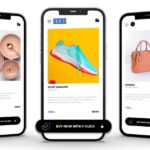E-commerce retailers often consider the checkout experience an afterthought. After all, the customer has already found the product and decided to buy. All retailers need to do is ensure the customer’s payment goes through smoothly, right?
However, retailers know that checkout can be fraught with friction. When customers reach the payment page and encounter unexpected shipping fees, sign-in requirements, payment issues, or other complications, they abandon their carts–and often abandon the retailer, too.
With the average shopping cart abandonment rate at 70%1, U.S. retailers lose more than $130 billion in revenue every year.2 “That abandonment is disappointing,” said Kartik Ramachandran, VP of Product at Bolt, a leading e-commerce checkout technology provider. “We see the customer intent, where they’ve gone through the exercise of finding your brand and the product, but then not checking out. Merchants across the web and mobile are constantly looking for those fallout points.”
Ramachandran pointed out that although retailers see the results of cart abandonment at the end of the journey, multiple factors contribute to that dissatisfaction along the way.
“The oversimplification would be that the payment or checkout process leads to the cart abandonment. While the most painful and controllable reason not to check out is a bad checkout process, there are upstream issues too,” Ramachandran said. “Was the customer able to compose the cart the way they wanted? Were the logistics and checkout processes streamlined so the customer could do multiple transactions? There’s a lot of convenience and convenience psychology involved in making sure the cart is not abandoned,” he added.
Retailers must investigate the fallout points and develop new solutions. Ramachandran suggested several strategies, such as providing customers with shipping fee information upfront instead of giving it for the first time upon checkout or offering guest check-in options and multiple payment methods.
Recognize to personalize and simplify
Addressing cart abandonment is just the start. Ramachandran said retailers have a significant opportunity to use the checkout for more than the final stage. He outlined key ways to use checkout to enhance the entire shopping journey.
Recognize the customer as soon as they log into the site. “We’re helping merchants recognize that the perfect login leads to the perfect log out,” Ramachandran said. Identify customers early in the visit, and not just when they prepare to pay. Retailers can use information from previous visits in personalized offers to make the next shopping trip easier.
Personalize the shopping experience. When retailers know how customers arrive at their site, they have a better understanding of what the customers want, and how to offer a tailored experience. Ramachandran said to look at how customers behave, such as how long they take to consider a product, or if they’re adding and removing a product from the cart. This behavior might indicate that a customer needs more information before making a purchase. A retailer could offer a pop-up chat window for assistance. “If you’re not actually customizing that experience for that shopper, then you’re missing out on cues they’re giving you,” he said.
Simplify the buying process. Reduce the number of clicks necessary for shoppers to buy. Ramachandran suggested considering time-saving steps like adding cart functionality at the top of each page on the website so customers can easily see what’s in their cart and can purchase at any time. Another way to simplify buying is through one-click checkout. “We’ve rolled out a product called Checkout Everywhere,” he said. “Merchants working with Bolt can offer one-click checkout so customers can buy products directly from the biggest search engine, social media ads, and more.” He added that offering hyper convenience and instant gratification creates a fast lane for checkout.
Leveling up checkout
Retailers aiming to create engaging shopping experiences from start to finish find success with solutions like Adobe Commerce, coupled with third-party extensions like Bolt Ignite, which is available for Adobe Commerce merchants. The Adobe Commerce platform allows retailers to create personalized journeys and makes it easy for shoppers to go from browsing to buying, boosting conversion rates.
Bolt Ignite enhances this by allowing payment at any point in the shopping process. It also allows retailers to tap into a powerful Universal Shopper Network that identifies shoppers, enables passwordless logins, and offers frictionless checkouts.
This network allows member retailers to recognize shoppers–even first-time visitors–enabling retailers to immediately offer a personalized shopping and buying experience.
“The Network can also unlock powerful omnichannel experiences,” Ramachandran said. “The rich network insights help retailers recognize and provide best-in-class services to customers online, offline, and at every touchpoint from checkout to check-in,” he added. “Together, the Adobe Commerce and Bolt Ignite solutions bring the checkout process to a new level.”
For more insights on elevating the checkout process, download the playbook: “Unifying the Ecommerce Experience: Start with Knowing the Customer.”
To learn more about boosting revenue through enhanced checkout conversion, explore the Bolt Ignite and Adobe Commerce partnership at bolt.com/adobe.
1. 49 Cart Abandonment Rate Statistics 2024 – Cart & Checkout – Baymard Institute. (n.d.). Baymard Institute. https://baymard.com/lists/cart-abandonment-rate
2. Wassel, B., & Wassel, B. (2022, November 7). The culprit behind $111 billion+ in lost revenue: abandoned ecommerce carts. Retail TouchPoints. https://www.retailtouchpoints.com/resources/the-culprit-behind-111-billion-in-lost-revenue-abandoned-ecommerce-carts






